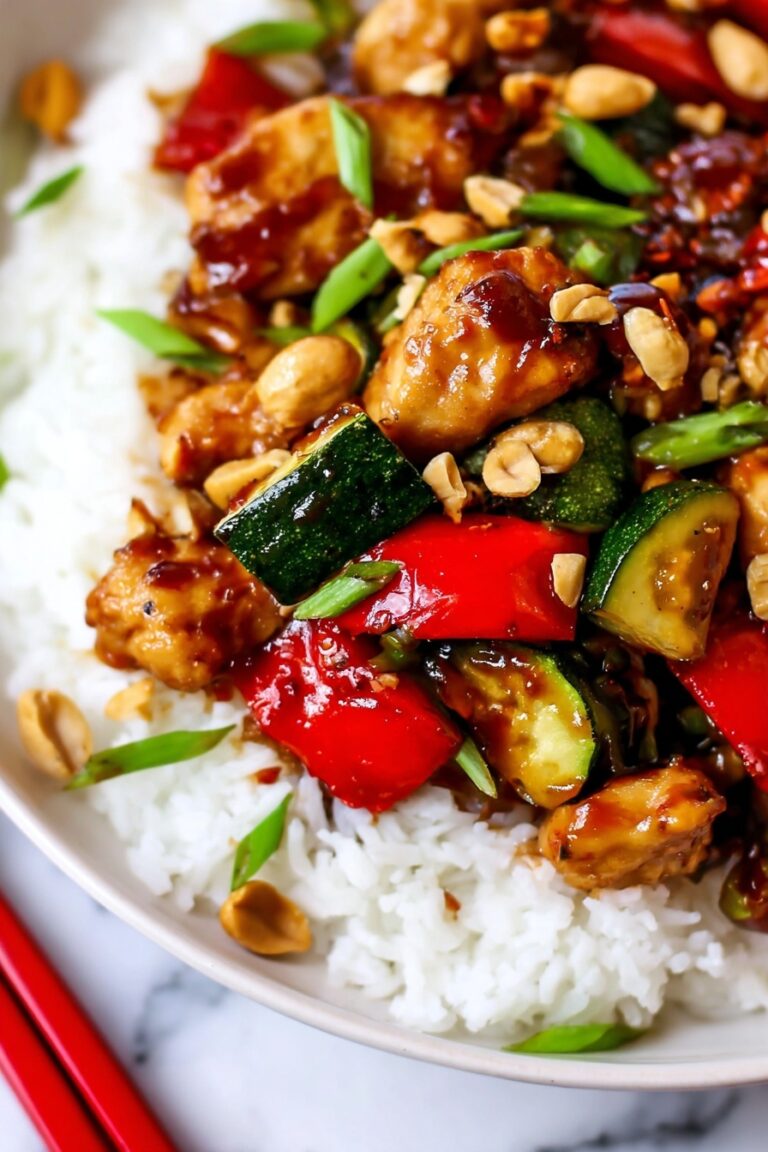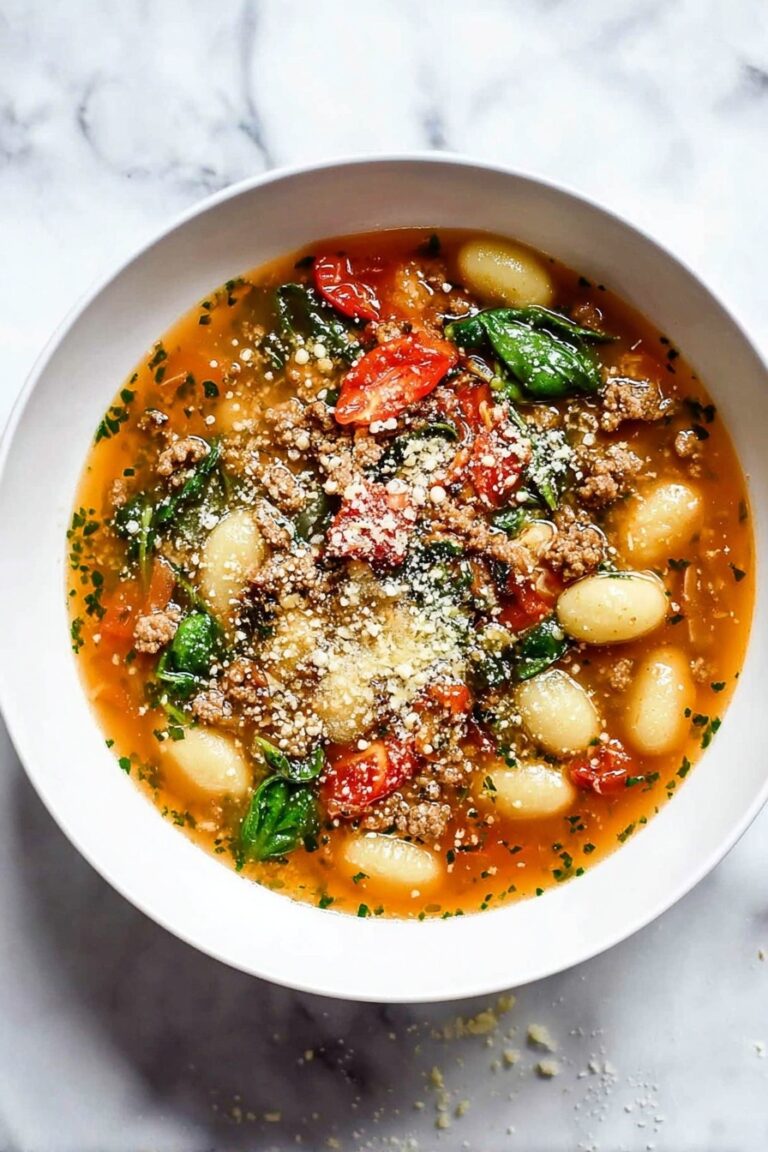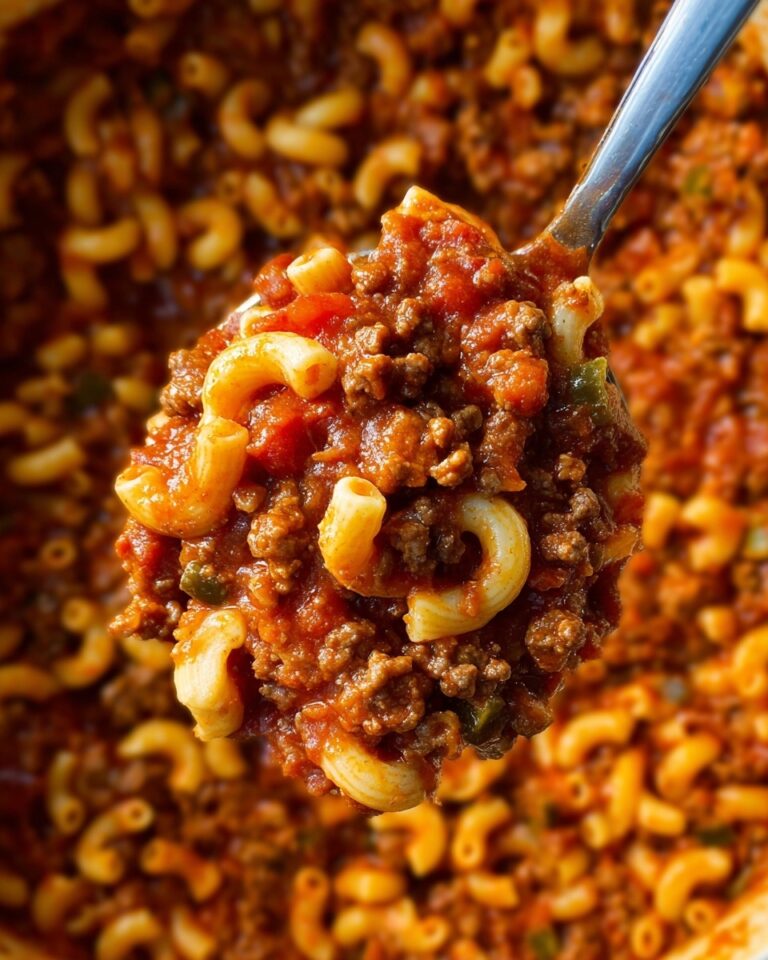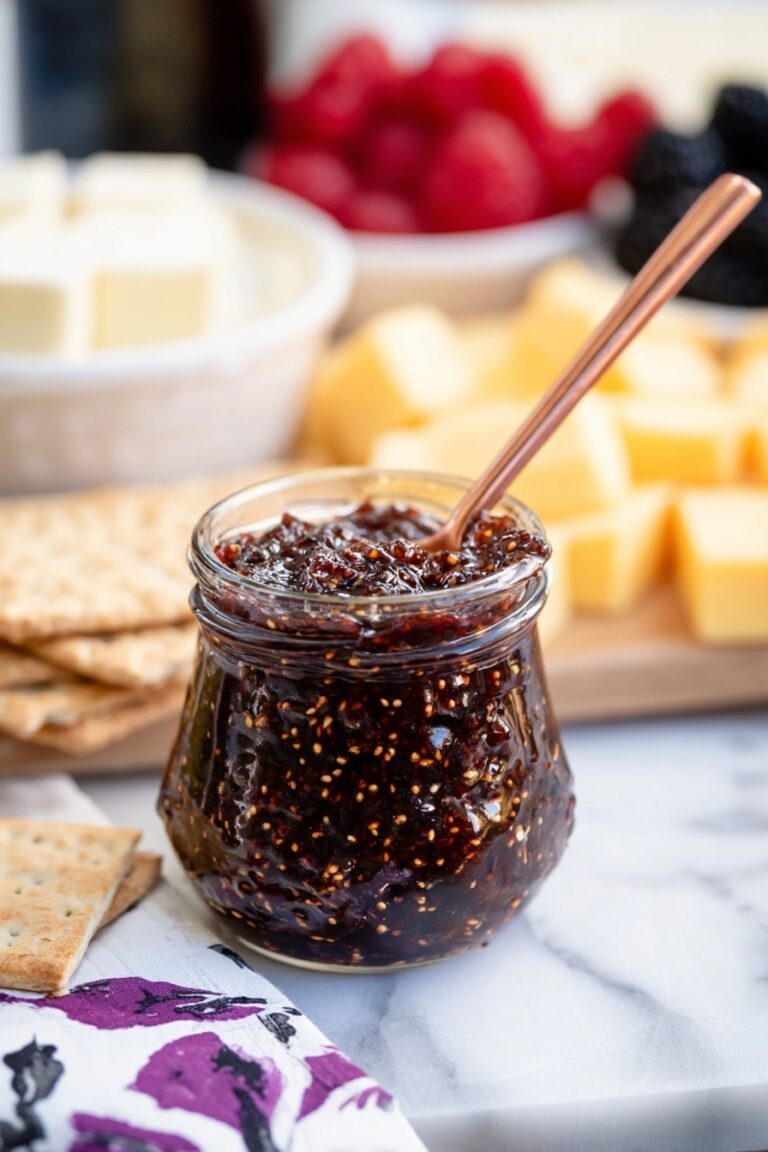Ginisang Munggo (Filipino Mung Bean Soup) Recipe
If you’ve ever craved a bowl of comforting, hearty, and nourishing soup that feels like a warm hug in a bowl, then you’re going to love this Ginisang Munggo (Filipino Mung Bean Soup) Recipe. It’s humble, full of flavor, and surprisingly easy to make—perfect for those days when you want something both healthy and satisfying. Trust me, once you try this, it’ll quickly become one of your go-to comfort dishes!
Why This Recipe Works
- Simplicity Meets Flavor: Basic pantry ingredients come together to create a deeply satisfying and savory dish that’s easy on the wallet.
- Balanced Textures: The softness of cooked mung beans complements the fragrant sautéed aromatics for a perfect mouthfeel.
- Customizable & Nourishing: You can tweak the seasoning and veggies to your liking, making it just right for your taste and dietary needs.
- Comfort Food Essential: This soup not only comforts but also nourishes you with wholesome ingredients and vibrant flavors.
Ingredients & Why They Work
Every ingredient in this Ginisang Munggo (Filipino Mung Bean Soup) Recipe plays an essential role. From mung beans that bring that soft, creamy heartiness, to the aromatics that build layers of comforting flavor. Plus, with just a few pantry staples, you’ll feel like a pro whipping up this classic Filipino favorite.
- Mung beans: The star ingredient! Look for clean, plump beans without discoloration—these soften beautifully and burst with flavor when cooked.
- Water: Essential for cooking the beans; adding it gradually helps achieve the perfect soup consistency without it being too watery or thick.
- Oil: For sautéing—helps develop those rich caramelized flavors in onions, garlic, and ginger.
- Onion: Adds subtle sweetness and depth; diced thinly for quick, even cooking.
- Garlic: Crushed and minced to infuse the soup with a fragrant punch.
- Ginger: Grated fresh ginger adds warmth and a subtle zing that lifts the whole dish.
- Tomatoes: Bring acidity and slight sweetness—mashing them during cooking breaks them down into the soup beautifully.
- Vegan chicken broth paste: A game-changer for umami without meat; boosts the overall flavor complexity.
- Vegan fish sauce or soy sauce: Provides the salty, savory backbone; adjust to taste for a balanced flavor.
- Malunggay (moringa) or spinach leaves: Adds a fresh, green brightness and extra nutrients just before serving.
- Salt and pepper: For final seasoning—don’t skip; they elevate all the flavors to the next level.
Tweak to Your Taste
I love how flexible this Ginisang Munggo (Filipino Mung Bean Soup) Recipe is. Over the years, I’ve personalized it depending on my mood, what I have in my kitchen, or even the season. You should feel free to experiment and make it yours, too!
- Add protein: Sometimes I add tofu cubes or sautéed mushrooms for extra substance, especially when I want a fuller meal.
- Swap greens: If malunggay isn’t available, baby spinach or kale works wonderfully to add color and nutrients.
- Spicy kick: Toss in some chopped chili or a dash of chili flakes if you like a bit of heat to contrast the earthiness.
- Make it lighter or thicker: Adjust the water to find your perfect soup thickness—brothier for sipping, thicker for spooning.
Step-by-Step: How I Make Ginisang Munggo (Filipino Mung Bean Soup) Recipe
Step 1: Rinse and Sort Your Beans
Start by sorting through your dried mung beans—throw away any discolored or shriveled ones, plus any stray bits of dirt or small stones (these sometimes sneak in). Rinse them under cold water until it runs clear. This step might sound simple, but trust me, it makes a huge difference in texture and cleanliness. Drain them well before moving on.
Step 2: Cook the Mung Beans
Transfer the mung beans to a large pot and add 6 cups of water. Bring to a boil over medium heat. Once boiling, turn the heat down and simmer gently for about 45 to 50 minutes, stirring occasionally. You’ll know they’re done when the beans have softened nicely and their skins begin to burst open. If it gets too dry, add more water as needed. This makes the base of your soup wonderfully creamy.
Step 3: Sauté the Aromatics
While the beans cook, grab another pot and heat oil over medium heat. Add the thinly sliced onions, crushed garlic, grated ginger, and a pinch of salt to help sweat the vegetables. Cook, stirring often, until everything is soft and aromatic—about 4 minutes. This step is crucial because those fragrant aromatics build the flavor foundation for your soup.
Step 4: Add the Tomatoes
Toss in the diced tomatoes and cook them down, mashing gently with the back of a spoon, for about 3 minutes until they soften and release their juices. This adds a bright acidity that balances the richness of the beans.
Step 5: Combine Beans and Seasonings
Pour the cooked mung beans along with their cooking water into the pot with the sautéed aromatics and tomatoes. Stir in the vegan chicken broth paste and vegan fish sauce (or soy sauce). If you like your soup thinner, add some or all of the remaining 2 cups of water now. Bring this mixture to a boil, then reduce to a simmer for another 10 minutes to blend those flavors beautifully.
Step 6: Finish with Greens and Season to Taste
Finally, toss in the malunggay or spinach leaves and cook for just about a minute until they’re wilted and vibrant green. Then give your soup a good taste and season with salt and pepper as needed. Serve it hot — it’s honestly just perfect that way!
Pro Tips for Making Ginisang Munggo (Filipino Mung Bean Soup) Recipe
- Don’t Rush the Beans: Cooking mung beans low and slow brings out their creaminess—avoid turning up the heat to speed things up or they’ll cook unevenly.
- Fresh Aromatics Are Key: Using fresh ginger and garlic rather than powders makes the flavor pop in a subtle way.
- Adjust Consistency Last: It’s easier to thin a thick soup than the other way around, so add water gradually.
- Mix and Taste: Always taste after adding broth paste and fish sauce—you might need to balance the saltiness with a pinch of sugar or more water.
How to Serve Ginisang Munggo (Filipino Mung Bean Soup) Recipe

Garnishes
I like to top my bowl of Ginisang Munggo with a little fried garlic for that crunch and extra aroma. Sometimes a squeeze of calamansi or fresh lemon juice brightens it up perfectly, cutting through the richness. Chopped scallions or fresh chili slices are other fantastic garnishes if you like some freshness or heat.
Side Dishes
This soup was made to be paired with warm, steamed rice—plain and simple. But if you want a little extra, Filipino-style fried eggplant or sautéed green beans go well. I also love serving it alongside lumpia (Filipino spring rolls) for a fun textural contrast.
Creative Ways to Present
For special occasions, I’ve served Ginisang Munggo in mini coconut shells for a rustic and festive vibe. You can also drizzle a bit of toasted sesame oil on top or garnish with edible flowers for a pretty presentation that will wow guests while staying true to the comforting nature of the dish.
Make Ahead and Storage
Storing Leftovers
Leftovers of this Ginisang Munggo store beautifully in an airtight container in the fridge for up to 4 days. I usually keep the soup separate from rice and reheat just before eating to keep everything fresh and vibrant.
Freezing
I’ve frozen this soup a few times with great success—just cool it completely before transferring into freezer-safe containers. It keeps well for up to 3 months and thaws quickly, making it wonderful for meal prepping or busy nights.
Reheating
When reheating, do so gently on the stovetop over low heat, stirring occasionally and adding a splash of water if it’s become too thick. Avoid microwaving for long periods to keep the soup’s texture smooth and fresh-tasting.
FAQs
-
Can I use canned mung beans instead of dried?
While you can use canned mung beans, the texture and flavor will differ. Dried mung beans cooking from scratch absorb flavors better, giving a creamier, more authentic soup. If using canned, rinse and reduce cooking time significantly.
-
What can I substitute for malunggay leaves?
If malunggay (moringa) isn’t available, fresh spinach, kale, or even mustard greens make great alternatives. These greens add a similar pop of color and nutrition.
-
Is this recipe vegan-friendly?
Yes! By using vegan chicken broth paste and vegan fish sauce (or soy sauce), this Ginisang Munggo is entirely plant-based and full of flavor.
-
How do I make the soup thicker?
Simply reduce the amount of water added towards the end and cook the soup uncovered for a few extra minutes until it reaches your desired consistency.
Final Thoughts
This Ginisang Munggo (Filipino Mung Bean Soup) Recipe is more than just a dish to me—it’s a bowl of memories and comfort passed down through generations. Whether you’re new to Filipino food or seasoned in its delights, this soup brings nourishing warmth and simplicity to any table. I can’t wait for you to make it, enjoy it, and maybe even share it with others just like I do. You’re really going to love it!









